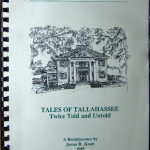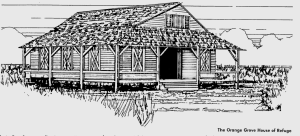Hurricane watches evoke emotion. They are oft-times viewed with humor by those who take these weather events lightly and are greeted with stress and anxiety by those who aren’t sure how to react, have responsibility for others, and people who live alone. Many residents and visitors partake in hurricane parties; not a particularly bad idea for commiserating with others placed in similar situations; provided that you’ve already properly prepared for the storm by “battening down the hatches,” stockpiling adequate water, food, fuel, and other provisions, and don’t over-party.

Wind map of Hurricane Dorian on Friday, August 30 10:00am (Windy.com)
Having lived through several hurricanes and countless watches and warnings over the last fifty or so years, I’ve become accustomed to the Atlantic tropical storm action and the community’s reaction.
Surfers and most tourists love this time of year. Homeowners and small businesses dread it.

Boynton Ocean Inlet Park 2019
Exceedingly, newcomers to town are anxious about hurricanes, albeit somewhat excited.
Historically speaking, Boynton Beach, Florida and its surrounding areas have experienced many devastating hurricanes. On the other hand, most years (about 9 out of 10 over the last 130 years), Boynton has dodged the bullet and had no significant hurricane damage.
Looking back, this blog series will examine Boynton’s most significant hurricanes over the last one hundred years or so. While there’s been loss of life and significant property destruction in the early twentieth century, the region’s growth and expanse has taxed roadways, storm sewers, electrical grids and water supplies in ways no one would have predicted.
Just look at how we communicate? Today one can email and text instantaneously to friends and relatives in other states, countries and continents.
Historically speaking…Imagine being in a storm with no warning, no place to go and no way to reach your friends and family? While today, we have advanced warning, computerized tracking models, the Weather Channel, cell phones and social media for connecting with and helping friends, neighbors and family members, communication used to be severely limited. Before the days of daily newspapers and radios, one of the early warning systems came as the FEC—Florida East Coast Railway locomotives signaled an SOS—a Morse Code system of three short, three long and three short horn blasts, symbolizing distress.

Hurricane fo 1928 Mass Burial Site

From the unnamed 1928 killer hurricane (when the Lake Okeechobee levee broke causing massive flooding), to the 1949 storm that spawned tornadoes that flattened parts of Boynton and much of Briny Breezes, to the 2004 triple play of hurricanes Frances, Jean and Charley, Boyntonites who’ve been here at least fifteen years understand hurricane wrath. They also understand how important it is to heed the ample warnings, to take precautions to secure their home, have basic supplies and expect at the least to be without power for several days or weeks.
Today, the City of Boynton Beach, and other local governments have carefully prepared hurricane plans and recovery plans. The community comes together to help. FEMA—the Federal Emergency Management Agency, created in 1978 also assists people with emergency aid after the storm. You might remember people lining up for MREs—Meals, ready to eat, and ice after Hurricanes Frances and Jean.
City of Boynton Beach Hurricane Preparedness
It’s always surprising, but understandable seeing people running around ransacking grocery stores and jockeying for a full tank of gas as storms approach. These precautions are smart moves, but today most gas stations and grocery stores have generators, and unless roadways are impassable after the storm, new deliveries will arrive again in a few days. We won’t starve. If the power goes out, and it’s likely to happen, food can spoil quickly, so having bread, tortillas, crackers, and peanut butter and jelly on hand will provide ample nourishment.

Gathering Hurricane Supplies navy.mil
Additionally, power is now more easily fixed, due to extensive and ongoing utility upgrades and a team of linemen who travel to affected area to repair lines and rescue new South Floridians who have never lived without air-conditioning. Oh, and water. The water coming out of your tap is fine now. Fill up cups, bottles, containers and such that you have in the house. Freeze them. They will serve as ice, then cold water if the power goes out. Even plastic bags can hold ice.
*If you live in a mobile home or evacuation zone—relocate to a safer place—inland preferably, or Wisconsin or Michigan, especially if you have friends and family there.
American Red Cross – Hurricane Preparedness
More to come…but for now, don’t panic. There’s plenty of time to prepare for Dorian, so heed the warnings and get ready. Please remember to help out others, especially people who live alone, and the elderly. We are all in this together.


















